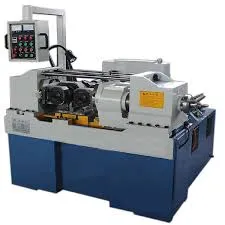
-
 Afrikaans
Afrikaans -
 Albanian
Albanian -
 Amharic
Amharic -
 Arabic
Arabic -
 Armenian
Armenian -
 Azerbaijani
Azerbaijani -
 Basque
Basque -
 Belarusian
Belarusian -
 Bengali
Bengali -
 Bosnian
Bosnian -
 Bulgarian
Bulgarian -
 Catalan
Catalan -
 Cebuano
Cebuano -
 Corsican
Corsican -
 Croatian
Croatian -
 Czech
Czech -
 Danish
Danish -
 Dutch
Dutch -
 English
English -
 Esperanto
Esperanto -
 Estonian
Estonian -
 Finnish
Finnish -
 French
French -
 Frisian
Frisian -
 Galician
Galician -
 Georgian
Georgian -
 German
German -
 Greek
Greek -
 Gujarati
Gujarati -
 Haitian Creole
Haitian Creole -
 hausa
hausa -
 hawaiian
hawaiian -
 Hebrew
Hebrew -
 Hindi
Hindi -
 Miao
Miao -
 Hungarian
Hungarian -
 Icelandic
Icelandic -
 igbo
igbo -
 Indonesian
Indonesian -
 irish
irish -
 Italian
Italian -
 Japanese
Japanese -
 Javanese
Javanese -
 Kannada
Kannada -
 kazakh
kazakh -
 Khmer
Khmer -
 Rwandese
Rwandese -
 Korean
Korean -
 Kurdish
Kurdish -
 Kyrgyz
Kyrgyz -
 Lao
Lao -
 Latin
Latin -
 Latvian
Latvian -
 Lithuanian
Lithuanian -
 Luxembourgish
Luxembourgish -
 Macedonian
Macedonian -
 Malgashi
Malgashi -
 Malay
Malay -
 Malayalam
Malayalam -
 Maltese
Maltese -
 Maori
Maori -
 Marathi
Marathi -
 Mongolian
Mongolian -
 Myanmar
Myanmar -
 Nepali
Nepali -
 Norwegian
Norwegian -
 Norwegian
Norwegian -
 Occitan
Occitan -
 Pashto
Pashto -
 Persian
Persian -
 Polish
Polish -
 Portuguese
Portuguese -
 Punjabi
Punjabi -
 Romanian
Romanian -
 Russian
Russian -
 Samoan
Samoan -
 Scottish Gaelic
Scottish Gaelic -
 Serbian
Serbian -
 Sesotho
Sesotho -
 Shona
Shona -
 Sindhi
Sindhi -
 Sinhala
Sinhala -
 Slovak
Slovak -
 Slovenian
Slovenian -
 Somali
Somali -
 Spanish
Spanish -
 Sundanese
Sundanese -
 Swahili
Swahili -
 Swedish
Swedish -
 Tagalog
Tagalog -
 Tajik
Tajik -
 Tamil
Tamil -
 Tatar
Tatar -
 Telugu
Telugu -
 Thai
Thai -
 Turkish
Turkish -
 Turkmen
Turkmen -
 Ukrainian
Ukrainian -
 Urdu
Urdu -
 Uighur
Uighur -
 Uzbek
Uzbek -
 Vietnamese
Vietnamese -
 Welsh
Welsh -
 Bantu
Bantu -
 Yiddish
Yiddish -
 Yoruba
Yoruba -
 Zulu
Zulu
famous types of thread rolling
Famous Types of Thread Rolling An Overview
Thread rolling is a popular cold-forming process used to create screw threads on various types of materials, particularly metals. This method is known for its efficiency and cost-effectiveness, primarily used in the manufacturing of fasteners such as bolts, screws, and studs. The process offers several advantages, including improved mechanical properties, surface finish, and precision when compared to traditional cutting methods. Below, we explore some of the famous types of thread rolling, their applications, and the benefits they provide.
1. Flat Die Thread Rolling
Flat die thread rolling is one of the most common types of thread rolling techniques. In this process, two flat dies are used to create threads on a cylindrical workpiece. The workpiece is passed through the dies, which deform the material to form the desired thread shape. This method is particularly effective for producing external threads on bolts and screws.
Applications Flat die thread rolling is often used in the manufacturing of standard fasteners like screws and bolts, specifically in high-volume production.
Benefits The primary advantage of flat die thread rolling is its efficiency; it allows for high-speed production with minimal waste material. Additionally, this method enhances the strength of the threads due to work hardening during the rolling process.
2. Circular Die Thread Rolling
Circular die thread rolling utilizes a pair of circular dies to create threads on metal rods. The material is fed through rotating circular dies, which are set at a constant pitch. This method is suitable for producing external threads with specific pitches.
Applications Circular die thread rolling is frequently employed in the automotive and aerospace industries for products requiring precision threads, such as hydraulic components and high-strength fasteners
.Benefits This technique is particularly beneficial for creating threads with an excellent surface finish and dimensional accuracy. The circular shape of the dies allows for consistent thread profiles, which is critical for assembly and load-bearing applications.
famous types of thread rolling

3. Flat Thread Rolling Machine
In contrast to traditional methods, the flat thread rolling machine employs flat dies that can roll threads either onto the surface of a cylinder or onto pre-existing shapes. This approach grants manufacturers the flexibility to work with various shapes and sizes of workpieces.
Applications Flat thread rolling machines are versatile and are used across multiple industries, including electronics, construction, and any sector requiring customized threaded components.
Benefits The adaptability of flat thread rolling machines allows for the production of a wide range of thread types without the need for extensive tooling changes. This versatility can lead to reduced lead times and increased productivity.
4. Roll Threading or Thread Rolling for Internal Threads
Roll threading, or thread rolling for internal threads, differs from the methods previously mentioned as it forms threads within a hole rather than on an external surface. This method utilizes specially designed tools that apply pressure to create internal threads.
Applications Roll threading for internal threads is commonly seen in applications where space constraints prevent traditional threading methods, such as in plumbing fittings and automotive parts.
Benefits This technique ensures that the internal threads have enhanced strength due to the material’s cold-forming process, which is vital in high-stress applications. Moreover, it minimizes the risk of chips and debris that typically occur with cutting threads.
Conclusion
Thread rolling is a pivotal process in modern manufacturing that provides numerous advantages over traditional cutting techniques. The famous types of thread rolling, including flat die, circular die, flat machining, and internal roll threading, cater to various industrial needs. Each method has its unique applications and benefits, enhancing efficiency, strength, and precision. As industries continue to demand higher quality and more robust components, thread rolling will remain an essential process, driving innovation and improvement across numerous sectors. With advancing technology, we can expect even greater enhancements in thread rolling methods, ensuring their relevance in future manufacturing processes.
